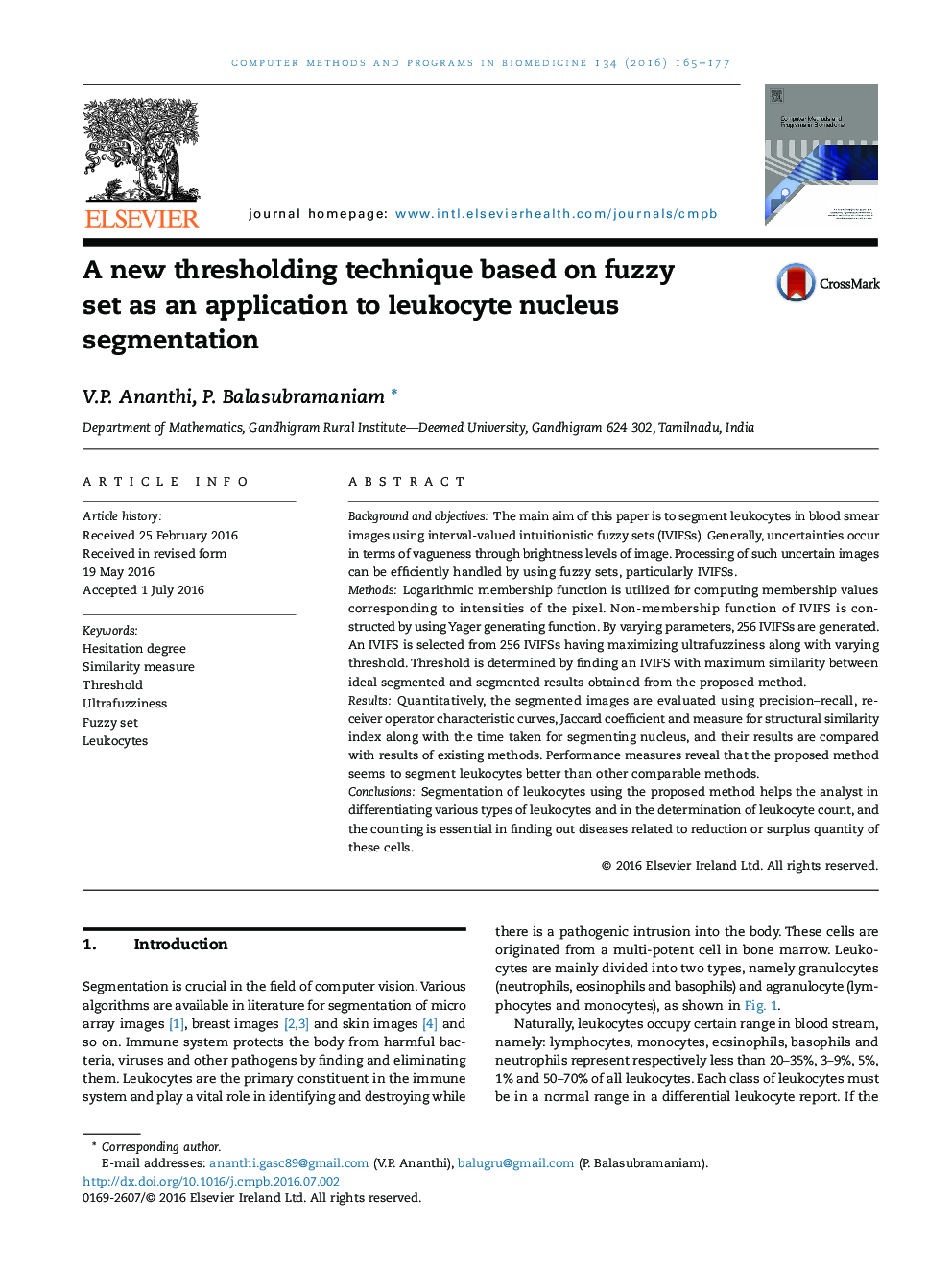| Article ID | Journal | Published Year | Pages | File Type |
|---|---|---|---|---|
| 466286 | Computer Methods and Programs in Biomedicine | 2016 | 13 Pages |
•A new fuzzy method is introduced to segment leukocytes in blood smear images.•Interval-valued intuitionistic fuzzy set is generated by minimizing ultrafuzziness.•Similarity between ideally thresholded and the segmented images are computed.•Best threshold is obtained by maximizing similarity.•Experimentally proven that the proposed method is better than other fuzzy methods.
Background and objectivesThe main aim of this paper is to segment leukocytes in blood smear images using interval-valued intuitionistic fuzzy sets (IVIFSs). Generally, uncertainties occur in terms of vagueness through brightness levels of image. Processing of such uncertain images can be efficiently handled by using fuzzy sets, particularly IVIFSs.MethodsLogarithmic membership function is utilized for computing membership values corresponding to intensities of the pixel. Non-membership function of IVIFS is constructed by using Yager generating function. By varying parameters, 256 IVIFSs are generated. An IVIFS is selected from 256 IVIFSs having maximizing ultrafuzziness along with varying threshold. Threshold is determined by finding an IVIFS with maximum similarity between ideal segmented and segmented results obtained from the proposed method.ResultsQuantitatively, the segmented images are evaluated using precision–recall, receiver operator characteristic curves, Jaccard coefficient and measure for structural similarity index along with the time taken for segmenting nucleus, and their results are compared with results of existing methods. Performance measures reveal that the proposed method seems to segment leukocytes better than other comparable methods.ConclusionsSegmentation of leukocytes using the proposed method helps the analyst in differentiating various types of leukocytes and in the determination of leukocyte count, and the counting is essential in finding out diseases related to reduction or surplus quantity of these cells.
